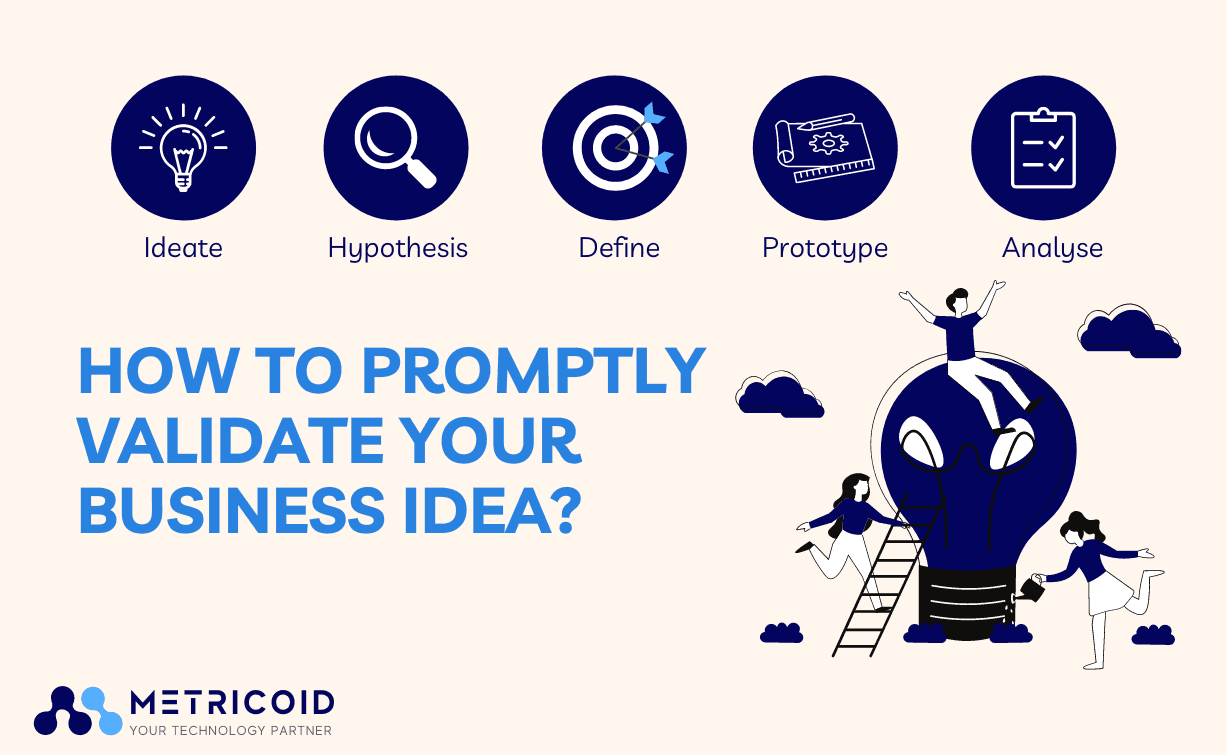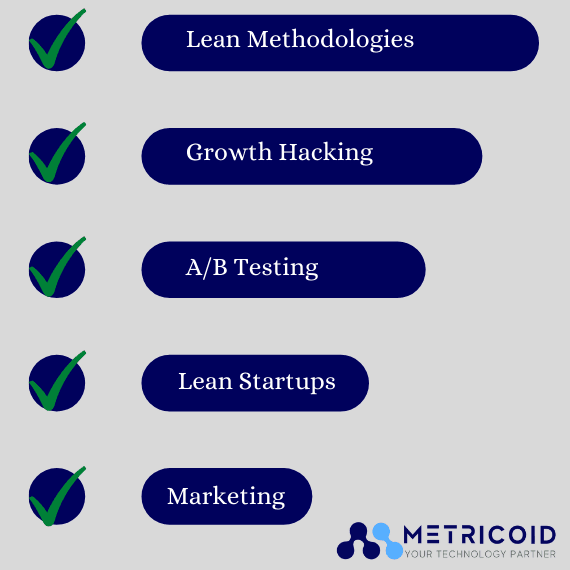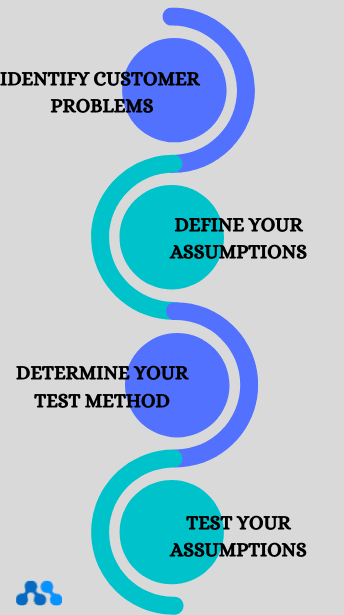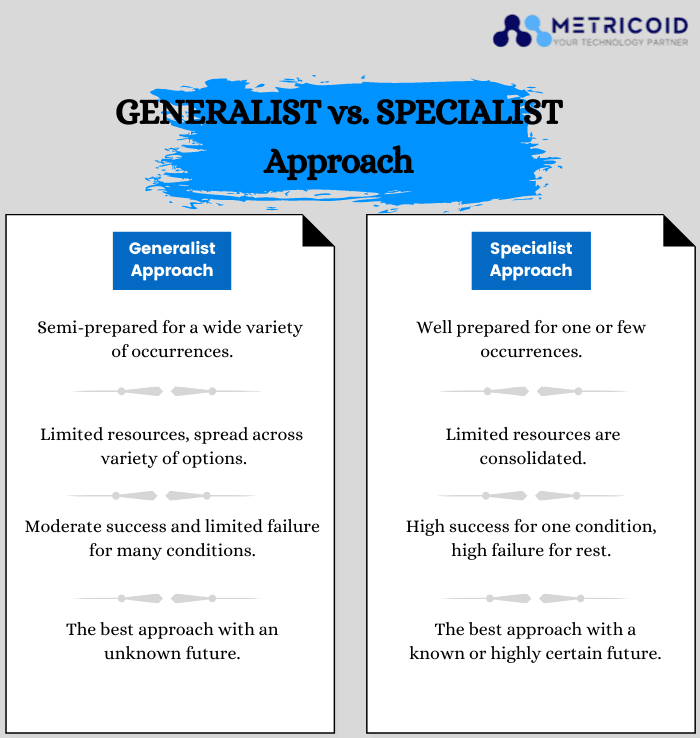How to promptly validate your businesss idea ?
Share This Post

How to promptly validate your businesss idea ?
It will be in the physical world if you have a business idea or are thinking about launching one. In your thoughts and imaginations, no. Your audience and consumers will be actual people, not fictitious characters. So, why then are you confirming your own notions in your head? You require genuine, hands-on input. That information aids you in making better business decisions.
The act of incorporating a concept (or a business idea) into the market can be intimidating, which causes ideas to stall. In truth, if you validate your concept by demonstrating that it has value beyond the napkin sketch on which it was scribbled, the rest of the procedure becomes a lot simpler.
What do you mean by Market Validation?

The process of establishing if your product has a demand in your target market is known as market validation. Validating your business idea can help you forecast whether or not customers will purchase your product or service, as well as whether or not your company will be lucrative.
Validating your idea early in the entrepreneurial process is critical to avoid wasting time and money on a product that isn’t a suitable match. Obtaining market validation also can offer investors improve the economy, and banks that are contemplating funding your firm more confidently.
Between having a brand-new design proposal (business idea) and starting the process of creating it, market validation is an important step in the product development cycle. Market validation, as the name implies, entails studying potential customers of a new product to see whether the product or company idea is viable in the target market, among the intended audience.
When establishing a startup idea-oriented around a new innovative product, introducing a new product inside an existing business, or developing a unique feature to add to existing products, market validation might be useful.
Before launching a product, it’s generally a good idea to do some market research. Market validation should generally begin substantially earlier in the development process. A deeper understanding and awareness of the target market will aid in the development of a more organized and efficient product. A market validation will take approximately three to four weeks, but rather more probably six to seven weeks, based on the number of interviews and participants. For overall market validation, choose one objective.
Verify the target market or the positioning and value propositions, whichever comes first. Attempting to accomplish both of these in a single market validation would result in too many variable parameters and factors, lowering the market validation’s effectiveness. Before moving forward, write down your goal and double-check that everyone involved understands it.
You can learn more about how your product meets or doesn’t satisfy the pain points of your target clients by going through the process of validating your company idea. The knowledge you gather can help you build a product that not only meets the needs of your target market but also wins you your first paying clients.
This procedure is usually carried out early in the product development process before any considerable expenditure has been made. The following are the two most prevalent ways to market validation:
▶ People from the target market, such as buyers and user profiles, should be interviewed.
▶ Send surveys, polls, and questionnaires to the personalities you’ve identified.
The idea is to include a direct exchange of information (feedback) from individuals who will utilize the product during the market validation study.
Why is Market Validation a crucial step?
-
▶ A better understanding of the marketplace is required.
Many companies and business startups may have a good awareness of the market situation and economic conditions, but this does not always equate to a good comprehension of the products that real users require or desire. Market validation at an early stage can assist in reducing this risk.
It enables companies to gain a better knowledge of the characteristics that a product should have in order to appeal to the end customer, as well as any other key findings that will influence positioning and marketing. Market validation also allows you to test initial designs with your target market in order to acquire a user’s viewpoint on whether a solution is practical. Furthermore, market validation is necessary to avoid wasting money and effort producing the incorrect product. After all, it’s much less expensive to explore if an idea would succeed than it is to discover it won’t after it’s been built.
-
▶ It aids in the acquisition of funds and resources.
Before executives approve the project and allow the product manager to initiate providing a budget, development time, marketing responsibilities, and so on, the product management team would need to demonstrate evidence of market validation to its executive staff.
Venture capitalists and other forms of investors required evidence of market validation from an entrepreneur soliciting finance for a new product idea before agreeing to fund the entrepreneur’s company.
It’s an inefficient approach to find flaws with your product idea, in addition to assisting companies in securing resources to bring their product concept to life. When a company comes up with a concept for a new feature or a completely new product, it may appear viable, perhaps brilliant at first. However, unless the product team puts its idea to the test—for example, performing customer validation interviews to see if they’d be interested in the product— the group could be missing the following key problems in the concept:
▶ The intended audience doesn’t require a stand-alone solution to solve the problem your product concept addresses, and they’ve already found a simple and cost-effective alternative that they prefer.
▶ While they enjoy the concept, they don’t believe it is significant enough to pay anymore.
▶ Companies in your target industries do not have the money to invest in your solution.
As a result, even a fantastic idea can fall short of the all-important goal of product-market fit. The more development effort your team has done before determining whether or not your product will be a failure in the market, the more costly loss will be.
The benefit of market validation would be that it allows your company to identify flaws before investing substantial time or resources in a product proposal. As a result, this is the simplest and quickest approach to find out if a concept isn’t worth pursuing. Your market validation approach should illustrate that the problem you’re tackling is significant enough for your target audience to invest in a solution.
Steps to Validate your Business Idea

You should focus on validating your assumptions slightly earlier to ensure that the most important ones for your business are correct. To check if your idea is relevant and appealing to the market you’ve specified, you might wish to validate your target market and its possibilities.
If, on the other hand, your assumptions about your market and idea are correct, you may begin testing your solution to see how all of the aspects interact in reality. Here’s what to do in order to get the idea validation procedure started:
-
▶ Make a list of your ideas and objectives
The first stage in market validation is to write down your company’s objectives. The act of defining your vision can reveal any fundamental assumptions and create a clear end purpose.
You’ll need to get some preliminary concepts to present to potential clients and prospective customers. You most likely have thousands of ideas for what you have been doing, but you only have the opportunity to present two to three at a time. It might be two to three various important aspects of your company or product in your situation.
Though, more than five is really too puzzling. Furthermore, you would not want to waste the potential customer’s attention and time. The time limit is approximately ten minutes. You might need to approach them eventually for extra information, so maintain it brief. Market (or Idea) Validation, like any other concept management task, begins with identifying your objectives. You’ll determine whatever you want to learn and what aspects to verify at this point.
For instance, your goal could be one of the following:
▶ Is your problem real and worth solving?
▶ Is your product (or offer) going to be able to fix the problem?
▶ How do your product’s primary features function?
▶ Is your company’s business model sustainable, realistic and scalable?
▶ Is there sufficient demand for your business model to succeed at the price you’ve set? In reality, how does your price structure work?
These are only a few instances of common and essential concerns. The objective of your project is to find the most important assumption associated with your unique idea, therefore make sure you start with the most crucial one. It could be the most reasonable assumption for you, but you could also start with the assumption with the highest drawback or the worst projected value. Make a list of all of your assumptions about your idea and prioritize the one that is most important for it to flourish.
-
▶ Form a hypothesis
It’s time to build a hypothesis based on your idea validation objective after you’ve established it. A testable statement or assertion that typically includes a prediction is referred to as a hypothesis.
The idea is, to begin with, the most important assumption. That’s the one that’s most prone to failure, and it’ll have the most serious implications if it does. What would have to be true in order for the concept to work?
For instance, in the case of Airbnb, the most important premise was that individuals are willing to stay at strangers’ homes and that homeowners are prepared to rent out their properties to strangers. This was the most important assumption for Airbnb because the entire concept relies on other people willing to share their homes. Although house-swapping was already a well-established notion and a cost-effective way to travel, Airbnb’s approach was unique. Before they ever had one, Airbnb’s concept was confirmed. They were searching for a means to pay their rental until they discovered that a large conference was coming to the city and that all of the hotels were already booked. The creators added three airbeds to their flat, provided a bed-and-breakfast service, and guided their visitors around the city, allowing them to pay their rent while also validating their company idea.
It is usually not difficult to come up with a hypothesis. What’s more crucial is defining the test’s minimum criteria for success, which is not always straightforward.
When it pertains to your contact lens business, the most important assumption is whether or not consumers are willing to buy online and at what price they are prepared to spend.
-
▶ Evaluate the size of the target market, schedule interviews.
Market validations can be carried out with as little as three or four interviews, although a bigger data collection is more reliable. You may also need hundreds of interviews if you’re testing a consumer product or service. If you’re evaluating a business-to-business product, 20-30 interviews will generally provide enough market validation. To get the number of contacts you’ll need, multiply the number of interviews you desire by a certain specific number (three is generally good).
Make an educated guess of your intended audience and the volume you could potentially grab before pushing forward with your venture. You can assess your company’s potential and justify its commencement by doing so.
Make sure your interviewees are aware of when you want to conduct the interviews. Schedule an appointment as quickly as practicable, as any missed appointments will be rescheduled. Also, make sure they understand how much time this should take.
It is usually not difficult to come up with a hypothesis. What’s more crucial is defining the test’s minimum criteria for success, which is not always straightforward.
It’s best if you can do some of the interviews in person. You would always gain valuable understanding from someone who is actually sitting in front of you then you will from someone who is speaking on the phone. It is not advisable to conduct the discussions via a web survey. Multiple choice answers aren’t appropriate for the type of information you’re looking for because it’s too intricate and subjective. Inquire about the motives, interests, and wants of prospective consumers, as well as the items they now use. Revert to the market validation criteria you created in the first phase and ask the potential interviewees questions as to any assertions or hypotheses you had established. Be receptive to comments and keep track of it for future reference.
You could utilize the input to improve your product and redo the market validation procedure if the feedback indicates that your product does not have strong market credibility.
-
▶ Experiment with your product and put it to the test.
Once you’ve formed a theory, you can begin testing it using experiments.
The goal of experimentation is to find the quickest and cheapest means to put your hypothesis to the test in real life. An experiment is a test (or a series of experiments) that measures the consequences of a hypothesis and determines if you should pursue your idea.
You have the opportunity to learn how to improve your idea or product while going through the validation procedure.
Conducting interviews and surveys on a regular basis is sufficient for validating a problem. If you wish to validate a product or service, however, you should use prototyping or something equivalent.
You might want to develop a landing page and run tests when validating pricing. You may also try selling a fake product and using accepted offers as a measure.
Ask for feedback, suggestions, responses, and comments when conducting research, and seek common responses to the following themes:
▶ Target market (those who say they’ll buy your stuff).
▶ Price it according to what customers are willing to invest. .
▶ Demand is defined as the number of people who will buy/continue to buy it.

Once you’ve established that your product has a market, make sure you’re releasing the most useful, intuitive version possible. You can do this by putting your product through alpha and beta testing.
▶ Internal staff test a product in a staged environment during alpha testing. The goal of alpha testing is to find and fix any problems, issues, or quirks in a product before making it available to the general public.
▶ Beta testing is when a product is put through its paces by a small group of real-world users who are tasked with finding flaws. Beta testing may be open to the public in the case of software or apps, with a warning informing users that the iteration they’re testing is unfinished.
-
▶ Examine, analyze, and make your decision
Personal data analysis is what you should perform. If you hire an outside organization to conduct market validation for you, they may not reach the conclusions you desire, or they may overlook data that they consider unimportant but that you find interesting. If you hire a third-party firm, make sure you are involved in the data analysis, if not performing it yourself. A high-level brief overview for management that includes significant themes and suggested changes in the product orientation, value summary, and target market is a great idea.
Entrepreneurship demands adaptability and perseverance. You can obtain the information you really have to produce the greatest version of your product if you take the time to describe your objectives and hypotheses, assess the market, interview potential consumers, and conduct tests. Make absolutely sure a sufficient number of clients will pay for your products or services before you spend all of your resources constructing an app or stocking up on inventory
If the enthusiasm displayed by family members and friends does not correspond to market potential, you will have sacrificed funds, effort, and energy. Several entrepreneurs’ endeavors have collapsed before they ever got off the ground due to a lack of consumer testing. In the world of entrepreneurship, the phrase “If you build it, they will come” is not accurate. There are numerous ways to test your business idea, depending on what it is.
Although validation is not really a guarantee of success because implementation is what counts, having validated the most key assumptions and utilizing the data you got during the validation process can undoubtedly aid you when creating, developing, and incorporating your concept.
Conclusion
People that start businesses are very often optimists, and while optimism is necessary, acquiring too much of it will not get you much further.
There are considerably more poor ideas than interesting and great business ideas, and there are far more awful answers than good solutions for those good ideas. Only by being extremely critical of your own work will you be able to overcome this problem and make better selections. The secret to quick learning is to keep the process simple and effective. Your preconceptions are frequently at odds with your actual challenges. So, rather than outlining each and every assumption and spending a lot of time deciphering them, think of your method as a simple, generic framework.
Pay close attention to selecting the appropriate selection criteria and indicators, and prioritize the most important components of your organization. Once you understand that your business idea is sound and the overall picture operates perfectly, you’ll have plenty of time to focus on fine-tuning the specifics. The goal of validation is to ensure that your idea has potential and possibilities rather than to come up with the perfect solution.
The importance of involving the correct audience while validating a new idea and getting feedback cannot be underestimated. Even though your closest friends and family are the first to embrace your idea, they aren’t always the most dependable source of evaluation. The capacity to obtain reliable information about your idea is critical to your idea validation process.
As a result, you’ll need to identify the ideal people who are knowledgeable about the industry or the subject of your idea. Idea validation should be done in a methodical way so that you can keep records of your assumptions about your idea as well as the quantitative results you’ve gotten from evaluating and testing it. Using specialized innovation technology platform for collecting, developing, assessing, and verifying new ideas is one method to boost your systematic approach.
Consider exploring Metricoid to validate product ideas and develop a speedy market fit. We employ a variety of tactics that have been tried in the past. We employ an evolutionary, progressive approach to develop the product’s idea, identify and prioritize critical features, and create a user-centered experience. As a result, we can build an engaging prototype within only a few weeks, allowing you to test and evaluate your concept with actual people. After the initial release, we continue to collect user feedback in order to develop new and improved versions. The ultimate purpose of developing a digital product or service is to provide value to people’s lives by making their everyday routines simpler, faster, and more pleasant.
Share This Post
Subscribe to newsletter
Subscribe to receive the latest blog posts to your inbox every week.
By subscribing you agree to with our Privacy Policy.


